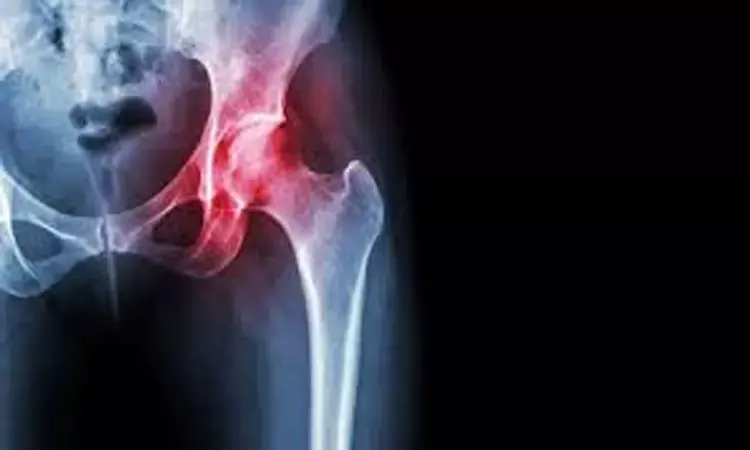- Home
- Medical news & Guidelines
- Anesthesiology
- Cardiology and CTVS
- Critical Care
- Dentistry
- Dermatology
- Diabetes and Endocrinology
- ENT
- Gastroenterology
- Medicine
- Nephrology
- Neurology
- Obstretics-Gynaecology
- Oncology
- Ophthalmology
- Orthopaedics
- Pediatrics-Neonatology
- Psychiatry
- Pulmonology
- Radiology
- Surgery
- Urology
- Laboratory Medicine
- Diet
- Nursing
- Paramedical
- Physiotherapy
- Health news
- Fact Check
- Bone Health Fact Check
- Brain Health Fact Check
- Cancer Related Fact Check
- Child Care Fact Check
- Dental and oral health fact check
- Diabetes and metabolic health fact check
- Diet and Nutrition Fact Check
- Eye and ENT Care Fact Check
- Fitness fact check
- Gut health fact check
- Heart health fact check
- Kidney health fact check
- Medical education fact check
- Men's health fact check
- Respiratory fact check
- Skin and hair care fact check
- Vaccine and Immunization fact check
- Women's health fact check
- AYUSH
- State News
- Andaman and Nicobar Islands
- Andhra Pradesh
- Arunachal Pradesh
- Assam
- Bihar
- Chandigarh
- Chattisgarh
- Dadra and Nagar Haveli
- Daman and Diu
- Delhi
- Goa
- Gujarat
- Haryana
- Himachal Pradesh
- Jammu & Kashmir
- Jharkhand
- Karnataka
- Kerala
- Ladakh
- Lakshadweep
- Madhya Pradesh
- Maharashtra
- Manipur
- Meghalaya
- Mizoram
- Nagaland
- Odisha
- Puducherry
- Punjab
- Rajasthan
- Sikkim
- Tamil Nadu
- Telangana
- Tripura
- Uttar Pradesh
- Uttrakhand
- West Bengal
- Medical Education
- Industry
In Hip OA, radiographic changes increased while pain decreased after 10 years: Study

Netherlands:Osteoarthritis (OA) of the hip is a common problem in Western society and a common diagnosis in primary care. Reset have found in a new study that patients with hip pain, after 10 years, may either receive a hip replacement (HR) or have stable symptoms, finds a recent study in the BMJ journal Annals of the Rheumatic Diseases.
The study, in which patients with early hip problems were followed for 10-years, one of the nine patients received an HR. Prevalence of clinical hip OA and hip ROA increased steadily. Overall, the researchers observed more hip OA but fewer or stable complaints with respect to physical functioning, and clinical signs and symptoms.
"So it could be cautiously concluded that after 10 years, first-time presenters with hip complaints either received an HR or their symptoms remained stable," wrote the authors.
Annemaria C. van Berkel, University Medical Center, Rotterdam, The Netherlands, and colleagues aimed to explore the natural course of hip osteoarthritis (OA) in a population of first-time presenters with hip complaints.
For the purpose, the researchers collected data at baseline and after 2, 5, 8 and 10 years on participants from the Cohort Hip and Cohort Knee study. Patients with early symptomatic hip OA were included.
Descriptive statistics were used to analyse the natural course of the hip complaints with respect to clinical signs and symptoms, physical functioning and radiographic osteoarthritis (ROA) features.
Key findings of the study include:
- In total, 588 participants were included with hip complaints and 86% completed the 10-year follow-up.
- The 10-year follow-up showed that 12% (69 participants) underwent hip replacement (HR), an increase of ROA of the hip (Kellgren and Lawrence score≥2) from 19% to 49%, and an increase in clinical hip OA according to the American College of Rheumatology criteria from 27% to 43%.
- All Western Ontario and McMaster Osteoarthritis Index subscales and physical activity remained on average constant during the 10-year follow-up for those who did not undergo an HR.
- The use of pain medication increased from 43% at baseline to 50% after 10 years.
During the 10-year follow-up study of the patients with hip pain, prevalence of radiographic hip osteoarthritis (OA) increased steadily, but pain was reduced and function remained stable.
The study titled, "10-Year natural course of early hip osteoarthritis in middle-aged persons with hip pain: a CHECK study," is published in the BMJ journal Annals of the Rheumatic Diseases.
DOI: https://ard.bmj.com/content/early/2021/01/14/annrheumdis-2020-218625
Dr Kamal Kant Kohli-MBBS, DTCD- a chest specialist with more than 30 years of practice and a flair for writing clinical articles, Dr Kamal Kant Kohli joined Medical Dialogues as a Chief Editor of Medical News. Besides writing articles, as an editor, he proofreads and verifies all the medical content published on Medical Dialogues including those coming from journals, studies,medical conferences,guidelines etc. Email: drkohli@medicaldialogues.in. Contact no. 011-43720751


